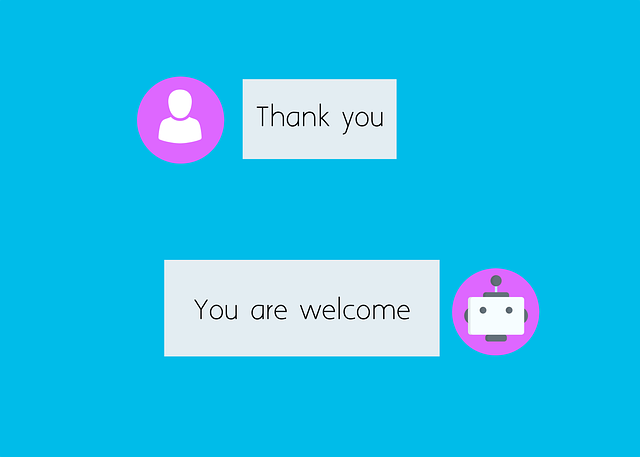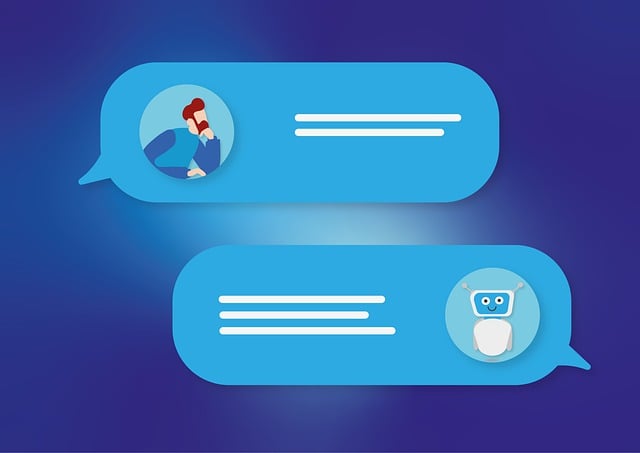“Chatbots have transformed digital interactions, and among them, scripted chatbots stand out for their ability to deliver tailored, context-aware conversations. This article delves into the intricacies of these advanced conversational agents. We’ll explore their role in enhancing customer service, from providing quick answers to handling complex queries. Understanding their creation involves mapping user journeys and crafting scripts, while benefits include cost reduction and 24/7 availability. Despite challenges like limited adaptability, scripted chatbots continue to evolve with promising future prospects.”
- Understanding Chatbots: A Brief Overview
- The Role of Scripted Chatbots
- How Scripted Chatbots Are Created
- Benefits of Using Scripted Chatbots
- Challenges and Limitations
- Future Prospects of Scripted Chatbots
Understanding Chatbots: A Brief Overview

Chatbots have revolutionized the way we interact with technology, offering automated assistance and enhancing user experiences across various platforms. These conversational agents are designed to simulate human-like interactions through natural language processing (NLP). By understanding user inputs and generating contextually relevant responses, chatbots provide quick solutions and personalized interactions.
In essence, a chatbot is a software application that engages in text or voice conversations with users, mimicking human dialogue. They are powered by advanced algorithms and machine learning techniques, enabling them to learn from user interactions and continuously improve their performance. Whether it’s answering customer queries, providing information, or performing tasks, chatbots have become an integral part of modern digital communication, making everyday interactions more efficient and accessible.
The Role of Scripted Chatbots

Scripted chatbots play a pivotal role in enhancing user experiences and streamlining business processes. These AI-driven tools are designed to engage in conversational interactions, providing pre-defined responses based on specific user inputs or triggers. By leveraging natural language processing (NLP) and machine learning algorithms, scripted chatbots can understand and interpret user queries, delivering relevant information or performing tasks efficiently.
In today’s digital landscape, chatbots have become indispensable, especially for customer service and support roles. They handle a multitude of inquiries, from providing basic product information to resolving common issues, thereby reducing response times and improving customer satisfaction. Moreover, scripted chatbots can be integrated across various platforms, including websites, mobile apps, and messaging services, ensuring consistent and accessible support for users worldwide.
How Scripted Chatbots Are Created

Scripted chatbots are created through a meticulous process involving several key steps. Developers begin by defining the chatbot’s purpose and intended audience, crafting a detailed conversational flow that mimics human interactions. This involves designing a series of questions and responses, considering various user inputs and branching conversation paths.
Once the conversational architecture is established, developers use programming languages and natural language processing (NLP) tools to bring the chatbot to life. They input the defined conversations into a chatbot platform or framework, which translates the text-based interactions into understandable commands for the AI engine. Regular testing and refining ensure the chatbot accurately processes user inputs, providing relevant and contextually appropriate responses.
Benefits of Using Scripted Chatbots

Scripted chatbots offer a multitude of benefits, revolutionizing customer service and engagement in today’s digital era. One of their key strengths is consistency; these bots adhere to pre-set scripts, ensuring every user receives accurate and uniform information. This predictability streamlines interactions, enabling businesses to handle a high volume of queries efficiently. By automating repetitive tasks, chatbots free up human agents to focus on more complex issues, enhancing overall operational productivity.
Additionally, scripted chatbots provide 24/7 availability, removing the limitations of human work hours. Customers can access support or receive assistance at any time, significantly improving user experience and satisfaction levels. These bots are also highly scalable; they can be easily replicated to manage sudden spikes in demand without compromising quality, a feature particularly valuable for businesses dealing with dynamic customer bases.
Challenges and Limitations

Future Prospects of Scripted Chatbots

As technology continues to evolve, scripted chatbots are poised to play an even more significant role in our daily interactions. Future prospects look promising, with advancements in natural language processing (NLP) and machine learning enabling chatbots to understand and generate human-like responses. These improvements will lead to more engaging and contextually relevant conversations, enhancing user experiences across various sectors.
The integration of scripted chatbots is expected to grow exponentially, particularly in customer service, healthcare, and education. They can handle a multitude of tasks, from providing quick support and answering frequently asked questions to offering personalized recommendations and assisting with complex procedures. With their ability to learn and adapt, these chatbots will not only streamline operations but also contribute to cost savings and improved efficiency for businesses and organizations.
